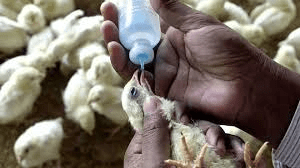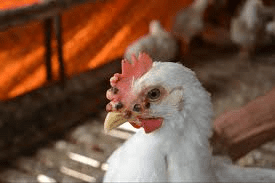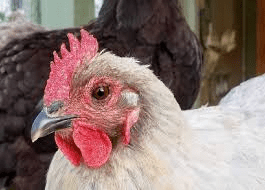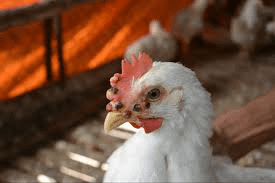Although poultry farming business is one of the lucrative businesses to venture into, it is also faced with certain challenges like poultry diseases and other issues that are often faced in every business out there.
This is not to discourage us the existing poultry farmers or the intending poultry farmers, instead it is to enlighten us about how to face and tackle these issues inorder to maximize your profits as a poultry farmer.
Today we are going to discuss about cold weather poultry diseases and how to manage them below.
Poultry birds and poultry production are generally affected by seasonal climatic or weather changes. For instance, in the wet or cold season, chickens eat more feed, drink less water and huddle together to generate heat and keep themselves warm.
On the other hand, chickens and other livestock birds consume less feed and drink more water in the hot season or weather in order to cool their body. Don’t be surprised that these changes affect the production of birds, most especially laying birds, as the egg production is reduced in extremely cold or hot weather.
This reduction in egg production occurs because when there are extreme cold or hot conditions, these birds are stressed, and their ability to withstand diseases or immune system is seriously affected.
Some certain poultry diseases are rampant in the wet, rainy or cold seasons. That is, the onset of rain favors the propagation and spread of the causative organisms of these diseases and parasites.
Hence, most poultry farmers experience high morbidity and mortality rate during this period. We’re going to discuss some of the poultry diseases that are highly prevalent or rampant in the wet, cold or rainy season.
Read Also: Cold Weather Poultry Diseases and How to Manage them
The following poultry diseases are prevalent during the rainy season:
(1) Infectious Bursal Disease (Gumboro Disease)

A viral infection that mostly affects immature birds aged between three and 18 weeks targeting the bursal component of the immune system resulting in immuno-suppression and susceptibility to secondary infections.
Chickens may exhibit severe prostration, inc-ordination, watery diarrhoea, soiled vent feathers, vent picking, and inflammation of the cloaca.
Highly contagious with flock morbidity of typically 100 per cent, and mortality can range from 5–20 per cent. Unfortunately, there is no effective treatment for this disease, therefore, depopulation of infected flocks and rigorous disinfection of contaminated farms is advisable.
Usually, the level of maternal immunity and vaccination reduces susceptibility to this infection during the rainy season.
(2) Fowl Pox (non-zoonotic)

Occurrence is highly dependent on the breeding time of mosquitoes or blood-sucking insects, which coincides with the rains.
The insects play a major role as vectors in transmission of the pox virus. The disease may occur at any age and is highly contagious attacking the skin and surface of the upper alimentary and respiratory tract leading to formation of wounds that progress to thick scabs.
Secondary infection of the pox results in birds being weak and emaciated due to loss of appetite, difficulty in swallowing and breathing, swollen eyelids leading to closure of one or both eyes and soiled feathers.
The infection has no treatment but it is possible to vaccinate to stop the outbreak.
Vaccinate healthy birds at the age of nine weeks, and this is done once as it provides lifetime immunity. Eliminate standing water and all mosquito habitats to control mosquitoes.
Isolate or cull infected birds to remove the source of the virus.
How to Recognize Fowl Pox in Chickens
There are some visible things you will notice, which are proofs that your chickens or turkeys have come down with fowlpox disease. Fowl pox leads to the development of round lesions with scabby centers on the skin of the birds.
The majority of the skin lesions are located on the wattle, face, comb, and some are occasionally located on the legs. This disease also affects the mouth and windpipe linings.
The lesions that are formed in the throat can develop to the extent of blocking the throat and it could eventually lead to death as a result of suffocation. Lesions on the face can extend to the eyes, causing temporary or permanent blindness of the affected bird.
How to Prevent Fowlpox in Chickens

The mechanical carriers of fowl pox are mosquitoes. So it is advisable to reduce the mosquitoes around your farm or environment. Ordinary sanitation and management practices will not avert this disease, so vaccination is often the solution.
It is recommended to vaccinate chickens and turkeys such as breeders, egg layers, and those that are highly susceptible to fowl pox. Live fowlpox vaccine is administered in the wing web of birds within age 6 and 10 weeks. If aggressive pecking is controlled among birds, skin damage which fowl pox causes is reduced.
How to Treat Fowlpox in Chickens
Unfortunately, fowlpox has no treatment once the fowlpox virus has affected a bird. But as long as a diseased bird is eating and drinking, it will recover from the disease in about two weeks or more with low mortality rate. When a bird recovers successfully from fowlpox, it is immune to the disease permanently.
Read Also: Layers or Broilers which One is More Profitable in Poultry Farming? Find Out!
(3) Fowl Cholera
It strikes birds older than six weeks. In acute outbreaks, the first warning sign is usually sudden death of birds that initially appeared healthy.
In chronic cases, affected birds exhibit labored breathing, diarrhoea (wet grey, yellow or green droppings), loss of appetite, ruffled feathers, drooped wings and tail feathers and the tendency of bird to sit quietly with their heads tucked in and eyes partly closed.
Depending on the localization of the disease, it may result in lameness and swelling of legs or wing joints or result in twisted neck, swelling around the eyes and discharge from beak or nostril. Symptoms of the chronic form may be confused with fowl typhoid.
How to Recognize Fowl Cholera in Chickens
In acute cases, birds that appear healthy die suddenly while in chronic cases the affected birds show the following:
- Yellow, green or grey diarrhoea
- Loss of appetite
- Laboured breathing
- Drooped wings and tail feathers
- Ruffled feathers
- Swelling of the leg joints, sinuses, wattle and foot pad
- Twisting of the neck (torticolis)
- Discharge from the nostril or beak
Note: The above signs are also similar to those of fowl typhoid.
How to Treat, Prevent, and Control Fowl Cholera in Chickens
Fowl cholera can be treated using sulfa drugs, tetracycline, and erythromycin. Poultry birds can be vaccinated against fowl cholera by administering a fowl cholera vaccine. Maintain proper hygiene and sanitation. Practice a high level of biosecurity and prevent rodents, wild birds, and other animals.
(4) E-coli and Salmonella
They occur as secondary infections following immuno-suppression and poor sanitation resulting from wet conditions.
The common symptoms include breathing difficulties, appetite loss, depression, infection of the umbilical stump (omphalitis) and low growth rates.
Management of this disease can be achieved by oral administration of broad-spectrum antibiotic and general sanitation management.
During the cold season, the humidity is likely to increase resulting to damp litter or feeds which provide favorable environment for fungus (Aspergillosis) to flourish in which the birds breathe in the spores, which grow into visible lesions as green and yellow nodules that completely fill the lungs causing a lot of respiratory discomfort.
High incidences of diseases under free-range during the cold season are due to uncontrolled exposure of birds to environmental influence, absence of housing, lack of routine vaccination and adequate feeding while in the case of intensification, the degree of stocking density and inadequate ventilation highly promotes the spread rate of the diseases.
How to Recognize Salmonellosis, Escherichia coli, Pullorum in Chickens

- Severe diarrhoea
- Loss of appetite
- Depression and emaciation
- Chicks suffer omphalitis
- White pasty diarrhoea in pullorum disease
- Huddling together and laboured breathing
How to Treat, Prevent, and Control Salmonellosis, Escherichia coli, Pullorum
Salmonellosis, E. coli and Pullorum diseases can be treated by administering a broad-spectrum antibiotic to the flock. High-level farm/pen hygiene and sanitation must be maintained. Biosecurity measures should be in place. Avoid feeding birds with contaminated feeds.
Read Also: Anatomy of Fishes: Female Fish and their Reproductive Strategies
What you need to know about certain poultry diseases
- In most cases when the cold conditions are extreme, the birds become stressed and this affects their production and ability to withstand diseases through immunosuppression leading to reduction in egg production.
- These observable symptoms may be associated with several diseases making it difficult to carry out a differential diagnosis to help identify the disease your flock is suffering from. Majority of poultry farmers identify these symptoms with New Castle Disease.
Cold Season Poultry Diseases Management Tips
During the cold period, birds increase their level of feed intake to generate heat and stay warm.
However, for a farmer, increasing the level of feed provision raises the cost of production besides wastage of nutrients that are not needed for heat generation.
To reduce costs and avoid wastage, energy rich sources like oil/fat should be added to the diet or level of other nutrients may be reduced keeping the energy at same level.
In free-range system, provide supplementary feeding to the birds to meet their nutrient deficit. Consider providing your birds with warm water periodically during this rainy season to encourage consumption and help them keep warm without using up energy reserved in the process.
With the rain, birds may encounter standing water (mostly in free-range) and end-up drinking from the ground leading to parasitic infestation from intestinal worms.
De-wormers administered after every three months help in management of worms, but you should remember the product withdrawal period as specified by the manufacturer.
Poultry house should be designed in such a way that it provides all the comfort required by birds during cold season while considering ventilation as well to prevent certain poultry diseases.
In regions where it rains heavily, the floor should be raised with a generous roof overhang, particularly over the entrance.
The raised floor can be a solid platform of earth to prevent floods. Orientation of a building with respect to wind and sun consequently influence temperature, and light on different external surfaces.
With better management, your flock will remain healthy and productive throughout the cold season.
Read Also: 6 Ways to Enhance Egg Production and Maximize Profits on Poultry Layers
Frequently Asked Questions
We will update this section soon.

